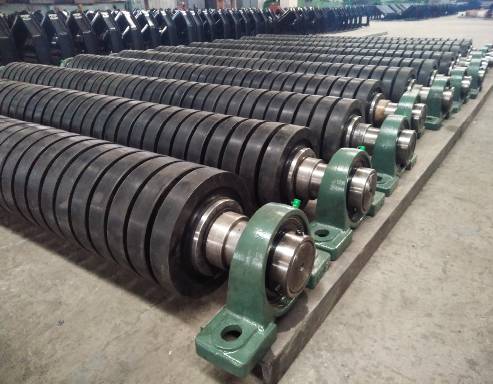 Afrikaans
Afrikaans  Albanian
Albanian  Amharic
Amharic  Arabic
Arabic  Armenian
Armenian  Azerbaijani
Azerbaijani  Basque
Basque  Belarusian
Belarusian  Bengali
Bengali  Bosnian
Bosnian  Bulgarian
Bulgarian  Catalan
Catalan  Cebuano
Cebuano  Corsican
Corsican  Croatian
Croatian  Czech
Czech  Danish
Danish  Dutch
Dutch  English
English  Esperanto
Esperanto  Estonian
Estonian  Finnish
Finnish  French
French  Frisian
Frisian  Galician
Galician  Georgian
Georgian  German
German  Greek
Greek  Gujarati
Gujarati  Haitian Creole
Haitian Creole  hausa
hausa  hawaiian
hawaiian  Hebrew
Hebrew  Hindi
Hindi  Miao
Miao  Hungarian
Hungarian  Icelandic
Icelandic  igbo
igbo  Indonesian
Indonesian  irish
irish  Italian
Italian  Japanese
Japanese  Javanese
Javanese  Kannada
Kannada  kazakh
kazakh  Khmer
Khmer  Rwandese
Rwandese  Korean
Korean  Kurdish
Kurdish  Kyrgyz
Kyrgyz  Lao
Lao  Latin
Latin  Latvian
Latvian  Lithuanian
Lithuanian  Luxembourgish
Luxembourgish  Macedonian
Macedonian  Malgashi
Malgashi  Malay
Malay  Malayalam
Malayalam  Maltese
Maltese  Maori
Maori  Marathi
Marathi  Mongolian
Mongolian  Myanmar
Myanmar  Nepali
Nepali  Norwegian
Norwegian  Norwegian
Norwegian  Occitan
Occitan  Pashto
Pashto  Persian
Persian  Polish
Polish  Portuguese
Portuguese  Punjabi
Punjabi  Romanian
Romanian  Russian
Russian  Samoan
Samoan  Scottish Gaelic
Scottish Gaelic  Serbian
Serbian  Sesotho
Sesotho  Shona
Shona  Sindhi
Sindhi  Sinhala
Sinhala  Slovak
Slovak  Slovenian
Slovenian  Somali
Somali  Spanish
Spanish  Sundanese
Sundanese  Swahili
Swahili  Swedish
Swedish  Tagalog
Tagalog  Tajik
Tajik  Tamil
Tamil  Tatar
Tatar  Telugu
Telugu  Thai
Thai  Turkish
Turkish  Turkmen
Turkmen  Ukrainian
Ukrainian  Urdu
Urdu  Uighur
Uighur  Uzbek
Uzbek  Vietnamese
Vietnamese  Welsh
Welsh  Bantu
Bantu  Yiddish
Yiddish  Yoruba
Yoruba  Zulu
Zulu Conveyor Rollers for Efficient Transportation in Quarry Operations
Understanding Quarry Conveyor Rollers An Essential Component in Material Handling
Conveyor systems play a pivotal role in the efficiency of quarry operations, facilitating the movement of aggregate materials from one location to another. Among the many components that make up these systems, conveyor rollers stand out as crucial elements that ensure smooth and reliable transportation of heavy materials. In this article, we will explore the significance of quarry conveyor rollers, their types, functions, maintenance, and innovations in the industry.
The Role of Conveyor Rollers
At its core, a conveyor roller is a cylindrical device that is typically mounted on frames to support the conveyor belt. These rollers are designed to reduce friction between the moving belt and the supporting framework, enabling the efficient transport of materials such as gravel, sand, and crushed stone. The design of rollers is critical, as it affects the overall performance of the conveyor system in terms of load capacity, speed, and durability.
In quarry operations, conveyor rollers help manage the transportation of large volumes of materials. Their ability to withstand harsh environmental conditions, such as dust, moisture, and wear from heavy loads, is indispensable. Without high-quality rollers, the efficiency of the entire material handling process can be compromised, leading to increased downtime and maintenance costs.
Types of Conveyor Rollers
There are several types of conveyor rollers used in quarry applications, each designed for specific functions
1. Idler Rollers These are stationary rollers that support the conveyor belt. They are critical for keeping the tension of the belt and ensuring it moves smoothly over the conveyor framework.
2. Drive Rollers Also known as powered rollers, these are driven by a motor and are responsible for moving the conveyor belt. They play a crucial role in determining the speed and efficiency of material transport.
3. Return Rollers Positioned at the bottom of the conveyor system, return rollers support the belt as it returns to the loading area, ensuring consistent alignment and reducing wear on the belt.
4. Impact Rollers These are specially designed rollers located at loading zones to absorb the impact when materials are dropped onto the belt. They help prevent damage to the belt and extend its lifespan.
quarry conveyor rollers

Maintenance Practices
To ensure optimal performance, conveyor rollers require regular maintenance. Some best practices include
- Regular Inspections Conduct thorough inspections of roller components, looking for signs of wear, misalignment, or damage. Early detection can prevent costly repairs down the line.
- Lubrication Keeping roller bearings lubricated is essential to reduce friction and wear. Regular lubrication schedules should be established based on the operational frequency of the conveyor.
- Cleaning Clean rollers to remove dust, debris, and material build-up. This helps maintain proper belt alignment and prevents unnecessary strain on the rollers.
- Replacement It is important to replace worn or damaged rollers promptly to avoid disruptions in operations and to maintain the integrity of the conveyor system.
Innovations in Conveyor Roller Technology
The conveyor roller industry is continuously evolving, with innovations focused on enhancing durability and efficiency. Recent advancements include the introduction of composite materials that reduce weight while increasing strength, leading to improved load handling and lower energy consumption. Advanced designs also incorporate features to reduce noise and vibration, contributing to a safer working environment.
Furthermore, technology integration has paved the way for smart conveyor systems that utilize sensors and IoT applications to monitor roller performance in real-time. These developments allow for predictive maintenance, enabling operators to anticipate failures before they occur and minimize downtime.
Conclusion
In summary, quarry conveyor rollers are a fundamental part of material handling systems, playing a critical role in enhancing operational efficiency. By understanding the different types, maintenance requirements, and innovations in conveyor roller technology, quarry operators can significantly improve their material transportation processes, ultimately leading to reduced operational costs and increased profitability. Investing in quality conveyor rollers and proper maintenance practices is key to ensuring the sustainability and efficiency of quarry operations.
-
Revolutionizing Conveyor Reliability with Advanced Rubber Lagging PulleysNewsJul.22,2025
-
Powering Precision and Durability with Expert Manufacturers of Conveyor ComponentsNewsJul.22,2025
-
Optimizing Conveyor Systems with Advanced Conveyor AccessoriesNewsJul.22,2025
-
Maximize Conveyor Efficiency with Quality Conveyor Idler PulleysNewsJul.22,2025
-
Future-Proof Your Conveyor System with High-Performance Polyurethane RollerNewsJul.22,2025
-
Driving Efficiency Forward with Quality Idlers and RollersNewsJul.22,2025





























